
This article originally appeared in the September/October 2020 issue of Museum magazine, a benefit of AAM membership.
This article is the perspective of the author and does not serve as formal legal advice. It’s always recommended to consult your own legal counsel with specific questions about your or your museum’s activities.
Museums may—and far more should—support political participation.
This is a true story.
A group of museum studies graduate students are collaborating with a museum to develop a history exhibit. A student suggests, “Hey, we should add a voter registration table to the exhibit!” The curator says, “No, that would be too—you know—political.” The subject of the exhibit? The struggle to pass the 19th Amendment, granting American women the right to vote.
That curator was mistaken if he believed that voter registration is forbidden under the tax code for 501(c)(3) organizations. The US tax code does state that 501(c)(3) organizations are “banned from partisan electioneering” with potential penalties including loss of tax exempt status and excise taxes. Critically, however, IRS guidance for 501(c)(3) organizations notes that certain voter education activities and activities intended to encourage participation in the electoral process, such as voter registration and get-out-the-vote drives “would not be prohibited political campaign activity if conducted in a non-partisan manner.”
More likely, the curator feared the perception of a partisan political agenda. As nonprofit museum professionals—working with funders, boards of directors, and multiple audiences—our world is rife with potential criticism. It’s one of the defining characteristics of our field—but one that we do best to embrace.
This fear of perceived partisanship, I believe, has led some museums to try to have it both ways: reflect American political life while avoiding legally sanctioned opportunities to support the democratic process. But when museums fear even a passing accusation of partisanship, they relinquish a critical role in the civic life of their communities.
Each institution must find its own voice. Here are some ways to get involved.
Nonpartisan Voter Registration
Many nonprofits conduct nonpartisan voter registration. The Georgia Museum of Art, in collaboration with the International Economic Justice League, registered voters during its Kevin Cole exhibition. The mixed-media artist’s work references the history of white communities suppressing the voting rights of Black Americans during the Jim Crow era; museum visitors were both reminded that racialized voter suppression goes back generations and provided the means to cast their vote.
The Levine Museum of the New South in Charlotte, North Carolina, has been registering new voters at naturalization ceremonies for years. Recently the museum developed a partnership with the League of Women Voters to staff a voter registration table at every evening program and Family Day. “Every event yielded new voter registrations and raised the league’s profile in Charlotte,” says museum CEO Kathryn Hill.
Here at Eastern State Penitentiary Historic Site we maintain voter registration tables in two on-site locations in election years and non-election years. We registered about 250 new voters in 2019, a non-election year.
We have been questioned just once about the legality of our program—by an elected official. We responded by citing the exact language from the IRS tax code. I like to think that we taught an elected official an important civics lesson that day.
Forums for Civic Dialogue
Leading up to the 2016 election, Jane Addams Hull-House Museum in Chicago partnered with artist Aram Han Sifuentes and collaborating artists across the United States to create Official Unofficial Voting Station: Voting for All Who Legally Can’t.
A form of the project continues as the nation approaches another presidential election. Several museums will host Sifuentes’ Voting Kits for the Disenfranchised throughout the fall. The artist helps museums produce imaginative “voting stations” for people who can’t vote, bringing attention to voting barriers or restrictions in the United States. The toolkits include infographics showing the population of people who cannot legally vote in the United States and “If We Could Vote, We Would” wristbands by the artist collective Undocumented Projects.
“In 2016, according to the United States Election Project, 29 percent of Americans (more than 92 million people) were ineligible to vote in the presidential election,” Sifuentes says. “This list does not even address voter suppression.”
Sometimes convening discussions among civic leaders, elected officials, and community members serves a vital democratic role. The House of the Seven Gables in Salem, Massachusetts, organized a 2017 public forum about a contentious piece of local sanctuary legislation, giving the mayor and councilmembers time to sit down with the capacity crowd to answer questions and talk through the proposed legislation.
Census Participation
The deadline for US Census participation has been extended to October 31.* The Museum of the City of New York, among others, has built programming, much of it now online, to encourage their audiences to participate in the Census.
“We are presenting [our exhibit] Who We Are as a way to highlight the importance of the upcoming Census—including what’s at stake in terms of ensuring fair political representation and sufficient funding for education, infrastructure, and social programs,” said museum Director and President Whitney Donhauser in a statement.
*Note: At time of press, the deadline had been extended to October 31. As of September 17, 2020, the updated deadline to complete the Census was shortened to September 30, a move that currently is pending in Federal court.
Fighting Misinformation and Disenfranchisement
Museums play multiple roles in fighting disinformation. As trusted content experts, museums can often present information and perspectives that some audiences will reject from journalists or academics in a setting conducive to healthy discourse. Additionally, as Braden Paynter of the International Coalition of Sites of Conscience points out, “Museums don’t just present the information side: it’s hard and rare to find places that can create the social, emotional, and physical setting that needs to be in place for the information to be effective.”
In planning for its “Project Democracy 20/20” initiative, Greensboro History Museum in North Carolina wanted to draw attention to the impact of partisan gerrymandering in the democratic process. The museum developed Gerrymander Madness: The Anti-Democracy VR Game, which gamifies the gerrymandering process. The exhibit uses virtual reality headsets to place visitors in the office of a fictional North Carolina legislator. The museum-goer’s objective is to redraw voting districts on a North Carolina map to gain political advantage for their political party or, put another way, to disenfranchise as many voters as possible.
“In gerrymandering, the voters don’t choose the politicians, the politicians choose the voters,” says museum Director Carol Ghiorsi Hart. “When a player wins by turning the state red or blue by big margins, democracy loses.”
The proliferation of misinformation in recent years prompted two museum professionals to create the #DayofFacts hashtag for museums to share hard evidence of climate change, evolution, immigration, and political history. More than 280 cultural and scientific institutions participated in the thread on February 17, 2017, according to The Washington Post. Since June 2020, however, the thread has been taken over by anti–Black Lives Matter posts.
We can choose to sit on the sidelines of the political process and civic debate. There is value in museums as places of beauty, reflection, and respite during times of national and personal crisis. It may be a fair critique, however, to suggest that a museum that chooses to play that role, and only that role, demonstrates an institutional comfort with the status quo.
Our work must be nonpartisan, but that doesn’t mean it can’t have some teeth. We can use our authority to dispel misinformation. We can call out ongoing efforts to suppress political representation. We can encourage and support voter engagement.
We can keep the text of the IRS tax code handy, and we can get to work.
Your Museum Can Register Voters, Too!
Eastern State Penitentiary’s Annie Anderson has created a simple “How To” guide for museums to get started with voter registration. It includes links to registration forms, suggested language to answer questions about nonprofit law, and the protocol for collecting and submitting the forms. Email us at newvoters@easternstate.org, and we’ll send you a copy!
Here are some highlights:
Identify the states from which you receive the most visitors, and stock voter registration forms for those states. You can download and print blank voter registration forms for any state at vote.gov.
Stock the national form that any US citizen from any state can use. It’s a bit more complex than any of the individual state forms, but having it on hand means that every visitor will have information on registering to vote. Download the national form at eac.gov/voters/national-mail-voter-registration-form.
Designate a computer kiosk for visitors to register to vote. Any American citizen can register to vote in about two minutes at vote.gov.
Include information on voting and pertinent links in your digital newsletters, press releases, websites, and social media.
Participate in National Voter Registration Day on September 22, 2020. Learn more at nationalvoterregistrationday.org.
Check out AAM’s Nonprofit Voter Resources, which provides answers to frequently asked questions about how nonprofits, including museums, and their staff and leadership can participate in advocacy and lobbying, nonpartisan election activity, and voter engagement. Learn more at aam-us.org/programs/advocacy/nonprofit-voter-resources/.
Sean Kelley is senior vice president at Eastern State Penitentiary Historic Site in Philadelphia, Pennsylvania.
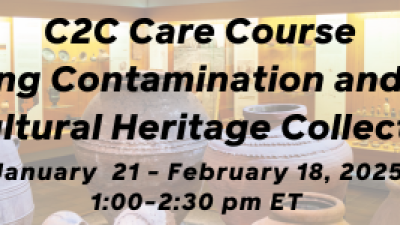



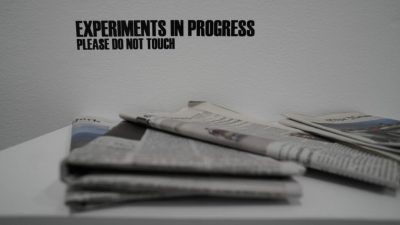
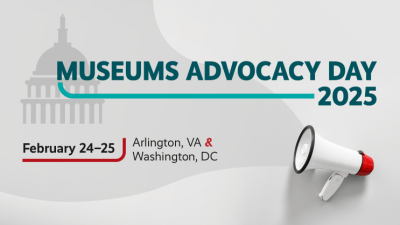
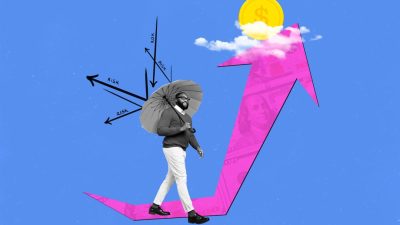
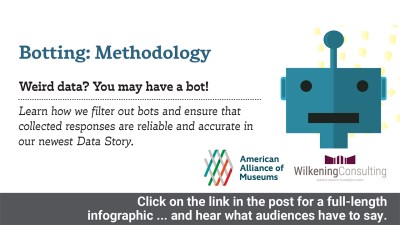
Great work museum community,
In our little rural community in NE GA., pop 29,000, we offer two opportunities.
First we combine with the North Georgia Headwaters Indivisible invites community members to come together for a brief candle-lighting at 5:30 PM ON THE Monday NIGHT BEFORE THE ELECTION, November 2. Participants are invited to: Please come with mask and your own candle (including protection for your hand!). We will light candles of hope from one to another and have a little quiet time to be together at a distance. We’ll disperse around 6:00
Second, we are the voting station for our area of the county supporting ore values of IDEA. As a “community center” we two thematic museums, art galleries representing 265 juried artists within a 50-mile radius, black box theater (currently dark), nature interpretation including 8 acres of land with thematic gardens and trails we serve as the “Front Porch” of this community providing a safe place to discuss difficult issues. Our board has also approved a Values Statement documenting our committment to Inclusion, Diversity, Equality and Access.